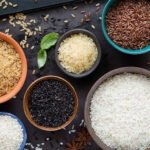Liquorice, also known as Sweet wood, Mulethi, Aslussoos, or Glycyrrhiza glabra, Jethimad is a versatile legume extensively utilized in various alternative medicine systems. The term ‘liquorice’ is derived from Greek, meaning “sweet root.” Its unique flavor primarily comes from anethole, a sweet-tasting compound found in herbs like anise and fennel.

The Sweetness and Health Benefits of Liquorice
The remarkable sweetness of liquorice stems from glycyrrhizin, a compound 30 to 50 times sweeter than sugar, which also boasts significant pharmaceutical effects. The root of this plant is utilized in various forms for its medicinal properties.
Active Compounds in Liquorice
Glycyrrhizin (Glycyrrhizic Acid)
Phytoestrogens (Isoflavones), primarily Glabridin
Traditional Uses of Liquorice
Respiratory Conditions: Effective in treating bronchitis, asthma, laryngitis, pharyngitis, and pulmonary tuberculosis.
Urinary Tract Infections and Dysmenorrhea
Gastrointestinal Issues: Useful for belching, dyspepsia, flatulence, and ulcers.
Liver and Spleen Diseases
Neuralgias
Skin Conditions: Beneficial for eczema, psoriasis, and impetigo.
Tobacco De-addiction
Methods of Use
Decoction: 5-7 grams of root twice daily.
Concentrated Extract: 1 gram.
Chewing the Roots: For oral ulcers and upper respiratory tract infections.
Evidence-Based Applications
Skin Care: Topical application of 0.5% glabridin inhibits UVB-induced pigmentation and erythema. It also exhibits anti-inflammatory effects by inhibiting superoxide anion production and cyclooxygenase activities, contributing to anti-melanogenesis.
Antibiotic Resistance: Licoricidin decreases antibiotic resistance and restores the efficacy of oxacillin against MRSA.
Cancer Inhibition: Glycyrrhetinic acid inhibits liver carcinogenesis and tumor growth. Glabridin effectively inhibits metastasis in non-small cell lung cancer by preventing migration, invasion, and angiogenesis.
Weight Loss: Inhibits triglyceride synthesis, aiding in weight loss and dyslipidemia.
Anti-viral: Effective against Hepatitis B and C. Intravenous licorice extract has shown potential in treating Hepatitis C.
Other Uses: Hair tonic, antioxidant, and anti-inflammatory agent.
Recommended Dosage
Flavonoids Extracts: Up to 1200 mg once daily.
Crude Licorice: Safe up to 20 grams. For those with cardiac and renal diseases, limit to 5 grams per day.
Side Effects and Interactions
Excessive consumption of liquorice can lead to symptoms resembling mineralocorticoid excess, including water and sodium retention, potassium depletion (hypokalemia), and hypertension. Deglycyrrhizinated liquorice (DGL) preparations can help mitigate these effects. High doses during pregnancy can inhibit placental enzymes, potentially causing low birth weight and hypertension risk in adulthood.
Interactions:
ACE inhibitors
Diuretics
Digoxin
Corticosteroids
Insulin and OHAs
MAO inhibitors
Oral contraceptives
Warfarin
Medications metabolized by the liver (e.g., celecoxib, diclofenac, ibuprofen, phenytoin)
Inform Your Physician
Always inform your physician if you are taking liquorice regularly to avoid potential adverse effects and interactions with other medications.
References
Liquorice is a potent herb with diverse health benefits. Proper usage and dosage can maximize its therapeutic effects while minimizing potential risks. For personalized advice, consult with a healthcare professional.


